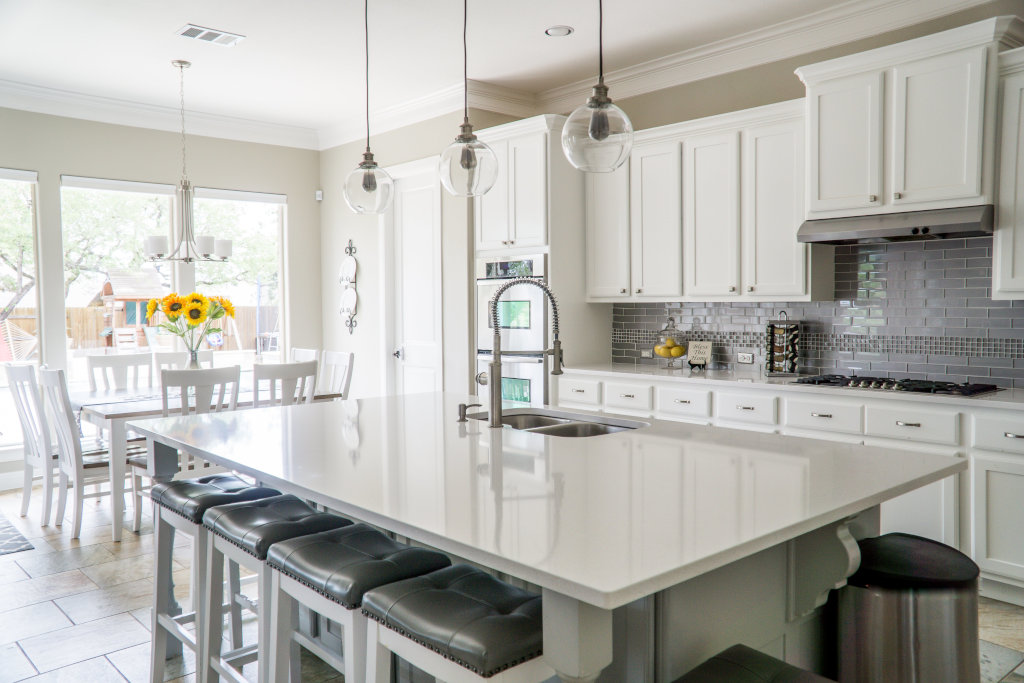Investing in residential real estate can be a lucrative endeavor, especially when focusing on markets that offer strong cash flow potential. Cash flow, the net income generated by a property after deducting expenses, is a critical factor for real estate investors seeking stable returns. In the vast landscape of the United States, several markets stand out for their ability to deliver robust cash flow. In this comprehensive exploration, we’ll delve into the top seven cash flow residential real estate markets that present promising opportunities for investors.
Top 7 Cash Flow Residential Real Estate Markets in the US
Memphis, Tennessee: A Beacon of Cash Flow Potential
Nestled along the banks of the mighty Mississippi River, Memphis, Tennessee, stands as a beacon in the realm of cash flow potential within the United States residential real estate market. Investors have consistently looked to Memphis as a prime destination, drawn by a unique combination of factors that contribute to its status as a cash flow haven.
- Affordable Housing and Rental Market Stability: Memphis boasts an impressive affordability index, making it an accessible market for real estate investors seeking to enter the residential sector without breaking the bank. The city’s real estate landscape is characterized by housing prices that remain below the national average, providing a favorable environment for investors looking to acquire properties at a reasonable cost. This affordability extends to the rental market, ensuring that landlords can offer competitive rates, which, in turn, attracts a consistent pool of tenants.
- Economic Resilience and Diversification: One of Memphis’s key strengths is its economic resilience, anchored by a diversified economy that spans multiple sectors. Healthcare, logistics, and tourism are integral components of Memphis’s economic tapestry. The city hosts a thriving healthcare sector, anchored by world-renowned institutions such as St. Jude Children’s Research Hospital, contributing significantly to stable employment levels. The logistics industry benefits from Memphis’s strategic location, being a major transportation and distribution hub. Additionally, the city’s cultural richness and historical significance make it a prominent tourist destination.
- Job Market Stability: The stability of Memphis’s job market is a crucial factor in the city’s allure for real estate investors. A stable job market translates to a consistent demand for rental properties, ensuring that investors can maintain high occupancy rates. Job opportunities across various sectors provide a diverse tenant base, contributing to the resilience of the rental market.
- Market Trends and Property Appreciation: Analyzing current market trends is imperative for investors seeking sustained returns. Memphis has witnessed steady property appreciation in recent years, further solidifying its status as a desirable investment destination. Understanding these trends and potential future developments is essential for investors looking to capitalize not only on immediate cash flow but also on long-term property value appreciation.
- Socio-Economic Factors: Beyond the economic indicators, socio-economic factors play a crucial role in determining the cash flow potential of a real estate market. Memphis’s cultural vibrancy, rich history, and sense of community contribute to the city’s overall livability. These factors not only attract residents but also enhance the overall appeal of the city’s rental properties.
- Challenges and Mitigations: While Memphis offers significant cash flow potential, investors must be aware of potential challenges. Local market dynamics, property management considerations, and regulatory factors can influence the success of real estate investments. Working closely with local real estate professionals, understanding zoning regulations, and staying abreast of any shifts in the market are critical to mitigating potential challenges.
- Future Prospects: Memphis’s trajectory in terms of economic development, job market stability, and property appreciation is promising. Ongoing infrastructure projects, cultural initiatives, and efforts to attract businesses contribute to the city’s positive outlook. Investors looking at Memphis for cash flow opportunities should consider the long-term prospects and potential for sustained growth.
Cleveland, Ohio: The Renaissance of a Rust Belt City
Cleveland, Ohio, once emblematic of the Rust Belt’s industrial decline, is now experiencing a renaissance that positions it as a standout destination within the Top 7 Cash Flow Residential Real Estate Markets in the United States. This reinvigoration is fueled by a convergence of factors that make Cleveland a compelling choice for real estate investors seeking both immediate cash flow and long-term appreciation.
- Affordable Housing and Steady Rental Market: Cleveland’s real estate landscape stands out for its affordability, providing an attractive entry point for investors. The city’s housing prices, below the national average, allow investors to acquire properties at a reasonable cost. Additionally, Cleveland boasts a stable rental market, ensuring landlords can find a consistent pool of tenants, contributing to a reliable stream of rental income.
- Economic Diversification and Resurgence: The renaissance of Cleveland is intricately tied to its economic diversification and resurgence. Historically reliant on manufacturing, Cleveland has diversified its economy, with a growing focus on healthcare, technology, and professional services. Investments in the healthcare sector, in particular, have bolstered the city’s economic foundation, attracting skilled professionals and contributing to job market stability.
- Revitalization Projects and Development Initiatives: Ongoing revitalization projects and strategic development initiatives have played a pivotal role in reshaping Cleveland’s urban landscape. The city has witnessed significant investments in infrastructure, public spaces, and cultural amenities. The revitalization of areas like the Flats and the Warehouse District has not only improved the quality of life for residents but has also enhanced the overall appeal of Cleveland’s real estate.
- Healthcare Hub and Educational Institutions: Cleveland’s emergence as a healthcare hub with world-class institutions such as the Cleveland Clinic and University Hospitals has not only driven economic growth but also attracted a steady influx of professionals. The presence of renowned educational institutions, including Case Western Reserve University, adds to the city’s appeal, creating a demand for both rental and owner-occupied housing.
- Job Market Stability and Economic Indicators: A stable job market is a key contributor to Cleveland’s attractiveness for real estate investment. The city’s economic indicators, including a relatively low unemployment rate, signal stability and resilience. The diversification of industries, including advanced manufacturing and technology, positions Cleveland as a city with multiple sources of employment, mitigating economic risks.
- Cultural Renaissance and Quality of Life: Beyond economic factors, Cleveland’s cultural renaissance has contributed to an improved quality of life. The city boasts a vibrant arts scene, a rich sports culture, and numerous recreational opportunities. These factors not only enhance the livability of the city but also contribute to the desirability of its real estate, making it an appealing choice for both residents and potential tenants.
- Challenges and Mitigations: Despite its positive trajectory, Cleveland, like any real estate market, presents challenges. Investors should be aware of factors such as neighborhood-specific dynamics, potential fluctuations in the job market, and the impact of economic cycles. Engaging with local real estate professionals can help investors navigate these challenges and make informed decisions.
- Future Prospects and Sustainability: Cleveland’s future prospects appear promising, with continued investments in infrastructure, technology, and healthcare. The city’s commitment to sustainable development aligns with broader trends in urban planning, further solidifying its potential for long-term growth. Investors keen on sustainable cash flow should consider Cleveland’s evolving landscape and its implications for the real estate market.
Birmingham, Alabama: Where Affordability Meets Economic Diversity
Nestled in the heart of the southern United States, Birmingham, Alabama, stands as a beacon among the Top 7 Cash Flow Residential Real Estate Markets, offering a unique blend of affordability and economic diversity that captivates real estate investors. The city’s resurgence is anchored in a confluence of factors that make it a compelling choice for those seeking robust cash flow opportunities along with potential long-term growth.
- Affordable Housing Market: Birmingham distinguishes itself with an exceptionally affordable housing market, setting the stage for real estate investors to enter the market without exorbitant upfront costs. This affordability not only attracts investors seeking an accessible entry point but also positions Birmingham as an attractive destination for renters who may find homeownership more attainable.
- Diverse Economic Landscape: Economic diversity is a key strength of Birmingham. Historically rooted in industries like iron and steel production, the city has diversified its economic base to include finance, healthcare, manufacturing, and technology. This diversity mitigates the impact of economic downturns and creates a stable job market, crucial for sustaining a healthy demand for rental properties.
- Healthcare and Education Hubs: Birmingham has emerged as a regional healthcare hub with major medical institutions such as the University of Alabama at Birmingham (UAB) and the UAB Health System. The presence of these healthcare facilities not only contributes to job market stability but also attracts a steady influx of professionals, creating a demand for both rental and owned housing.
- Manufacturing and Technological Growth: The city’s roots in manufacturing have evolved to encompass advanced manufacturing and technology sectors. Investments in these industries not only contribute to job creation but also position Birmingham as a city embracing technological advancements. This shift aligns with broader trends in the modern economy, making it an attractive destination for a diverse range of professionals.
- Job Market Stability: Birmingham’s economic diversification translates into a stable job market, a fundamental factor for the sustained success of real estate investments. The city’s ability to offer employment opportunities across various sectors ensures a consistent demand for rental properties, enhancing the overall cash flow potential for investors.
- Revitalization Initiatives and Infrastructure Projects: Birmingham has undergone revitalization initiatives aimed at enhancing the city’s infrastructure, public spaces, and overall appeal. Projects like Railroad Park and the renovation of historic districts contribute not only to the quality of life for residents but also to the attractiveness of real estate investments. Infrastructure projects further signify a commitment to the city’s growth and sustainability.
- Challenges and Mitigations: While Birmingham presents a favorable landscape for real estate investors, challenges exist. Local market dynamics, neighborhood-specific considerations, and potential economic fluctuations should be carefully evaluated. Engaging with local real estate professionals and staying informed about market trends will help investors navigate challenges and make informed decisions.
- Future Prospects and Community Development: Birmingham’s future prospects hinge on sustained community development efforts and a commitment to economic growth. Continued investments in education, technology, and community infrastructure suggest a positive trajectory. Investors eyeing long-term cash flow potential should closely monitor these developments and their potential impact on the real estate market.
Indianapolis, Indiana: The Crossroads of Opportunity
Nestled at the heart of the Midwest, Indianapolis, Indiana, emerges as a prominent player among the Top 7 Cash Flow Residential Real Estate Markets in the United States. Aptly known as the “Crossroads of America,” Indianapolis boasts a strategic location, diverse economic opportunities, and a thriving cultural scene that collectively contribute to its appeal for real estate investors seeking both immediate cash flow and long-term growth.
- Affordability and Entry Point: Indianapolis distinguishes itself with an affordable housing market, providing an accessible entry point for real estate investors. The city’s housing prices, often below the national average, create an environment where investors can acquire properties at a reasonable cost, attracting both first-time investors and seasoned professionals seeking a diverse portfolio.
- Strategic Location and Economic Hub: The city’s moniker, the “Crossroads of America,” is not merely symbolic. Indianapolis serves as a major transportation hub with intersecting highways, making it a logistical center for distribution and commerce. This strategic location contributes to a robust economy, attracting businesses and professionals alike and ensuring a steady demand for housing.
- Job Market Diversity: Indianapolis has diversified its economy beyond its historical roots in manufacturing. Today, it hosts a spectrum of industries, including finance, healthcare, technology, and education. This economic diversity not only creates stability in the job market but also fosters a dynamic environment, attracting a diverse and skilled workforce.
- Healthcare and Educational Institutions: The city is home to world-class healthcare institutions such as the Indiana University Health system and St. Vincent Health, contributing significantly to job market stability and attracting medical professionals. Additionally, a strong educational presence, including Indiana University-Purdue University Indianapolis (IUPUI), further enriches the city’s cultural fabric and appeals to a wide range of residents.
- Real Estate Market Stability: Indianapolis has demonstrated real estate market stability, a crucial factor for investors seeking cash flow. The city’s ability to weather economic fluctuations, combined with a growing population, ensures a steady demand for rental properties. This stability, coupled with the city’s affordability, enhances its attractiveness for real estate investment.
- Cultural Vibrancy and Quality of Life: Indianapolis offers a vibrant cultural scene and a high quality of life for its residents. The city hosts numerous cultural events, sports activities, and recreational opportunities, creating a well-rounded living experience. These factors not only contribute to the satisfaction of residents but also enhance the overall appeal of the city’s real estate market.
- Infrastructure Development and Urban Renewal: Indianapolis has undertaken significant infrastructure development and urban renewal projects, enhancing the city’s overall aesthetics and functionality. Initiatives such as the Cultural Trail and the ongoing development of the downtown area contribute to the city’s appeal, attracting both residents and businesses and potentially leading to increased property values.
- Challenges and Mitigations: While Indianapolis presents a favorable investment landscape, investors should be mindful of challenges, including neighborhood-specific dynamics, potential shifts in the job market, and the impact of economic cycles. Thorough due diligence and collaboration with local experts are essential for navigating these challenges effectively.
- Future Growth and Innovation: Indianapolis’s commitment to innovation and continued economic development positions it for future growth. The city’s embrace of technology, coupled with a proactive approach to attracting businesses, suggests a positive trajectory. Investors keen on long-term cash flow potential should monitor these developments and assess their impact on the real estate market.
Jacksonville, Florida: Sun, Sea, and Cash Flow

Situated along the picturesque northeastern coast of Florida, Jacksonville emerges as a beacon of opportunity and cash flow potential within the Top 7 Cash Flow Residential Real Estate Markets in the United States. Known for its inviting climate, coastal allure, and economic vibrancy, Jacksonville offers real estate investors a unique combination of factors that make it an attractive destination for both short-term gains and long-term appreciation.
- Affordable Housing in a Coastal Paradise: Jacksonville’s real estate market stands out for its affordability, especially considering its coastal location. Investors find an accessible entry point into the market, as housing prices remain relatively reasonable compared to other coastal cities. This affordability not only attracts investors but also positions Jacksonville as an appealing destination for residents seeking an affordable coastal lifestyle.
- Economic Growth and Job Market Expansion: Jacksonville has experienced significant economic growth and a burgeoning job market. The city’s diverse economy includes sectors such as logistics, finance, healthcare, and technology. The strategic location of the city as a transportation and logistics hub further contributes to job market stability. A growing job market translates to an increased demand for rental properties, a key factor for investors seeking consistent cash flow.
- Logistics and Trade Opportunities: As one of the largest cities in Florida, Jacksonville’s prominence in the logistics and trade sectors contributes to its economic vitality. The city’s seaport, one of the busiest in the nation, facilitates international trade and commerce. This strategic advantage not only fuels economic growth but also ensures a steady flow of professionals seeking housing in the area.
- Healthcare and Military Presence: Jacksonville boasts a robust healthcare sector, with renowned medical institutions such as Mayo Clinic Jacksonville. The city is also home to military installations, including Naval Air Station Jacksonville and Naval Station Mayport. The combined effect of these factors ensures a diverse and stable job market, contributing to the city’s overall economic resilience.
- Cultural Appeal and Quality of Life: Beyond economic factors, Jacksonville offers a rich cultural tapestry and a high quality of life. Residents and potential tenants are drawn to the city’s vibrant arts scene, diverse culinary offerings, and numerous recreational opportunities. The proximity to beautiful beaches, parks, and the St. Johns River enhances the overall appeal of Jacksonville, making it a desirable destination for a wide range of individuals.
- Tourism and Short-Term Rental Opportunities: Jacksonville’s appeal as a tourist destination adds another layer of opportunity for real estate investors. The city hosts various events and festivals throughout the year, attracting visitors and creating demand for short-term rental properties. This dynamic allows investors to explore both traditional long-term rental strategies and short-term vacation rental opportunities.
- Infrastructure Development and Urban Renewal: Jacksonville has witnessed ongoing infrastructure development and urban renewal projects. Investments in areas such as downtown Jacksonville and the Southbank Riverwalk contribute not only to the city’s aesthetics but also to the potential for increased property values. These initiatives align with the city’s commitment to sustainable growth.
- Challenges and Mitigations: While Jacksonville offers a favorable investment climate, investors should be aware of challenges, including potential effects of natural disasters such as hurricanes, neighborhood-specific dynamics, and market fluctuations. Engaging with local real estate professionals and staying informed about local conditions are crucial for mitigating these challenges.
- Future Growth and Innovation: Jacksonville’s commitment to future growth and innovation positions it as a city with long-term potential. Ongoing initiatives in technology, sustainable development, and attracting new businesses suggest a positive trajectory. Investors eyeing long-term cash flow should monitor these developments and assess their impact on the real estate market.
Kansas City, Missouri: A Hidden Gem for Cash Flow Investors
Nestled in the heart of the Midwest, Kansas City, Missouri, emerges as a hidden gem within the Top 7 Cash Flow Residential Real Estate Markets in the United States. Recognized for its affordability, economic diversity, and unique cultural offerings, Kansas City presents real estate investors with an enticing combination of factors that make it a promising destination for those seeking robust cash flow opportunities and long-term growth.
- Affordable Housing Market: One of Kansas City’s standout features is its affordable housing market. The city offers investors an attractive entry point, with housing prices often below the national average. This affordability not only appeals to real estate investors looking for cost-effective acquisitions but also positions Kansas City as an appealing destination for residents seeking affordable homeownership.
- Diverse Economy and Stable Job Market: Kansas City boasts a diverse economy with strengths in finance, healthcare, manufacturing, and technology. This economic diversity contributes to job market stability, ensuring a consistent demand for rental properties. As a result, investors in Kansas City can benefit from a reliable stream of rental income, a key factor for those prioritizing cash flow in their investment strategies.
- Strategic Location and Logistics Hub: The city’s strategic location has established it as a crucial logistics and transportation hub. With a central position in the United States, Kansas City serves as a key intersection for highways, railways, and air transportation. This logistical advantage not only fuels economic activity but also enhances the city’s appeal for businesses and professionals seeking connectivity.
- Cultural Scene and Quality of Life: Beyond its economic strengths, Kansas City offers a vibrant cultural scene and a high quality of life for residents. The city is renowned for its jazz heritage, barbecue culture, and a thriving arts community. These cultural amenities not only contribute to the satisfaction of current residents but also enhance the overall appeal of the city, attracting a diverse population.
- Educational Institutions and Innovation: Kansas City hosts notable educational institutions, including the University of Missouri-Kansas City and the Kansas City Art Institute. The presence of these institutions fosters innovation and contributes to a skilled workforce, attracting professionals to the area. Investors benefit from the stability provided by a well-educated and diverse population.
- Historic and Distinctive Neighborhoods: Kansas City’s neighborhoods, each with its own character and charm, contribute to the city’s overall allure. From the historic architecture of Westport to the artsy vibe of the Crossroads Arts District, investors have a diverse range of neighborhoods to explore. Understanding the nuances of each area is essential for investors looking to tailor their strategies to specific market segments.
- Infrastructure Development and Urban Revitalization: Kansas City has witnessed ongoing infrastructure development and urban revitalization efforts. Investments in projects like the Streetcar line and the redevelopment of the Kansas City Convention Center District enhance the city’s overall appeal. These initiatives signify a commitment to growth and can potentially lead to increased property values.
- Challenges and Mitigations: While Kansas City offers a favorable investment climate, investors should be cognizant of challenges, including neighborhood-specific dynamics, potential economic shifts, and market fluctuations. Diligent research and collaboration with local real estate professionals are crucial for navigating these challenges effectively.
- Future Growth and Tech Initiatives: Kansas City’s commitment to future growth is evident in its embrace of technology and innovation. The city has positioned itself as a “Smart City,” implementing initiatives to enhance connectivity and efficiency. Investors interested in long-term cash flow should monitor these technological advancements and their potential impact on the local real estate market.
Atlanta, Georgia: The Economic Powerhouse of the Southeast
Nestled in the heart of the American South, Atlanta, Georgia, emerges as a standout within the Top 7 Cash Flow Residential Real Estate Markets in the United States. Renowned for its economic prowess, cultural vibrancy, and strategic importance as a regional hub, Atlanta presents real estate investors with a dynamic landscape for both immediate cash flow and long-term growth.
- Robust Economic Hub: Atlanta stands tall as an economic powerhouse in the Southeast. Home to a diverse array of industries, including finance, technology, film production, and logistics, the city’s economy is a driving force behind its real estate market. The presence of major corporations and a thriving business environment contribute to job market stability, ensuring a consistent demand for residential properties.
- Affluent Job Market and Employment Opportunities: The city’s job market is marked by its affluence and diversity. From Fortune 500 companies to burgeoning startups, Atlanta offers a wide range of employment opportunities. The city’s role as a major transportation and logistics hub further amplifies its economic significance, attracting professionals from various sectors and creating a steady demand for housing.
- Affordable Housing and Market Diversity: Atlanta’s real estate market is characterized by its affordability relative to other major metropolitan areas. This affordability extends to both housing prices and the overall cost of living, making Atlanta an attractive destination for both residents and investors. The market’s diversity, with offerings ranging from historic neighborhoods to modern developments, provides opportunities for various investment strategies.
- Educational and Healthcare Institutions: Atlanta is home to esteemed educational institutions such as Emory University and the Georgia Institute of Technology. The presence of these institutions not only contributes to the city’s intellectual capital but also attracts a steady influx of students and professionals. Healthcare facilities like the Emory Healthcare system further enhance Atlanta’s appeal and create a stable job market.
- Cultural Richness and Quality of Life: The cultural richness of Atlanta is evident in its vibrant arts scene, diverse culinary offerings, and a strong emphasis on Southern hospitality. Residents and potential tenants are drawn to the city’s numerous attractions, including the High Museum of Art, the Atlanta BeltLine, and a thriving music and film industry. This cultural allure enhances the overall quality of life and contributes to the city’s real estate desirability.
- International Airport and Connectivity: Hartsfield-Jackson Atlanta International Airport, one of the world’s busiest airports, underscores Atlanta’s role as a global connectivity hub. This connectivity not only facilitates business and tourism but also attracts a diverse range of professionals to the city. Investors can benefit from a tenant pool with a broad array of backgrounds and preferences.
- Tech Hub and Innovation Ecosystem: Atlanta has emerged as a burgeoning tech hub, with a growing innovation ecosystem. The city’s investment in technology and its support for startups contribute to a dynamic business environment. Real estate investors attuned to the demands of the tech workforce can capitalize on the evolving landscape and cater to the housing needs of this demographic.
- Infrastructure Development and Urban Revitalization: Ongoing infrastructure development and urban revitalization projects further enhance Atlanta’s real estate appeal. Initiatives like the BeltLine project, which aims to create a sustainable network of public parks, multi-use trails, and transit, contribute to the city’s overall livability and potentially increase property values in surrounding areas.
- Challenges and Mitigations: While Atlanta presents lucrative opportunities, investors should be mindful of challenges such as traffic congestion, potential fluctuations in the job market, and neighborhood-specific dynamics. Diligent research, collaboration with local real estate professionals, and staying informed about market trends are crucial for navigating these challenges successfully.
- Future Growth and Sustainability Initiatives: Atlanta’s commitment to future growth is underscored by sustainability initiatives, transit expansion projects, and a focus on smart urban planning. Investors looking for long-term cash flow potential should keep an eye on these developments, as they can impact property values and the overall attractiveness of different neighborhoods.
Conclusion
Investing in residential real estate requires a thorough understanding of market dynamics, economic trends, and potential for cash flow. The top seven cash flow residential real estate markets—Memphis, Cleveland, Birmingham, Indianapolis, Jacksonville, Kansas City, and Atlanta—present unique opportunities for investors. As with any investment, careful research, due diligence, and collaboration with local real estate professionals are essential to navigate each market’s nuances successfully. This comprehensive exploration aims to equip investors with the insights needed to make informed decisions and capitalize on the cash flow potential offered by these vibrant real estate markets.
FAQs
- How can I assess cash flow potential in a real estate market?
- Assessing cash flow potential involves analyzing rental income, operating expenses, and potential risks. Utilize tools and consult with professionals for accurate assessments.
- Are there risks associated with investing in cash flow markets?
- Yes, risks include market fluctuations, economic downturns, and regulatory changes. Diversifying investments and staying informed can help mitigate these risks.
- What role do local economic factors play in cash flow opportunities?
- Local economic factors, such as job growth and GDP, directly impact rental demand and property values, influencing cash flow opportunities.
- How can I stay updated on real estate market trends?
- Stay informed through real estate publications, industry reports, and networking with local professionals. Attend seminars and webinars to stay abreast of market trends.
- Are there tax implications to consider when investing in these markets?
- Yes, tax implications vary. Consult with a tax professional to understand tax benefits, deductions, and obligations associated with real estate investments.






